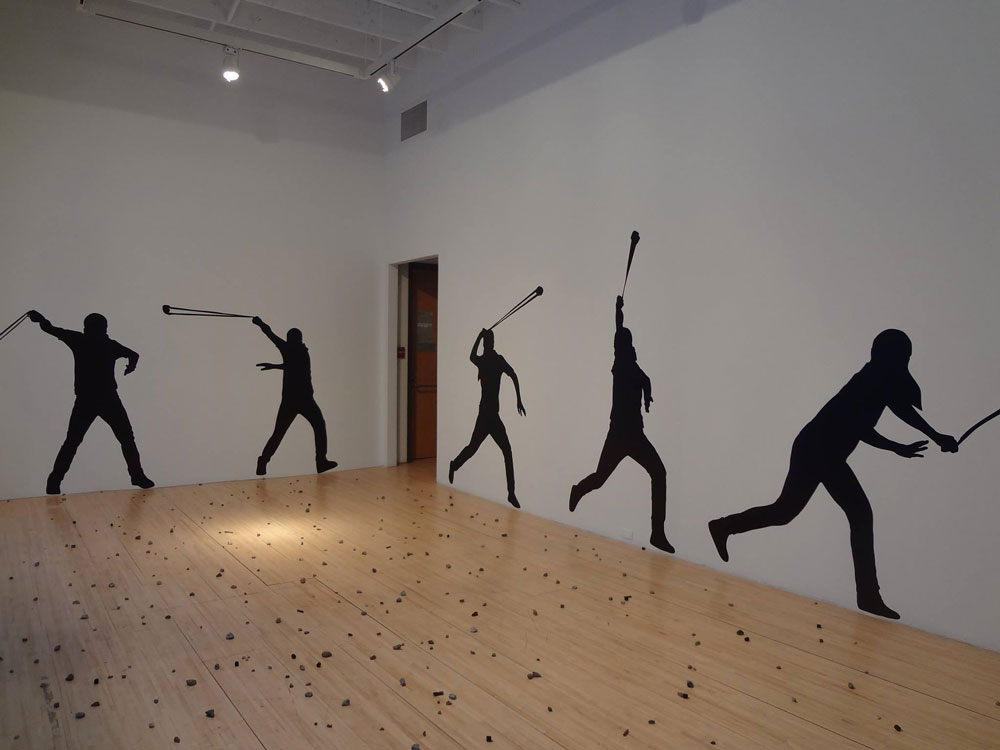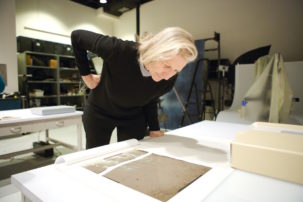
Our editors’ weekly roundup of Canadian art news.
On Wednesday, CBC News published an exposé of the financial arrangements behind a Toronto family’s donation of more than 2,000 prints by acclaimed photographer Annie Leibovitz to the Art Gallery of Nova Scotia. The Mintz family’s 2013 purchase and subsequent donation to the gallery has been flagged by the Canada Revenue Agency as a potential tax shelter set up by the donors for profit. Accordingly, The Canadian Cultural Property Export Review Board, a Canadian tribunal “that certifies cultural donations for tax purposes” has refused to certify the bulk of the photographs as “cultural property,” in effect questioning whether the collection is of “outstanding significance and national importance” to Canada. Following the donation, the AGNS tried to certify the prints through the review board at a fair market value of $20 million, more than four times the purchase price in the draft agreement. The board has rejected three applications for certification so far, and a fourth is now pending. A member of the Mintz family and the CEO of the AGNS have both told the CBC that the decision has denigrated Leibovitz’s artwork, and alienated her.
Administration of the iconic Igloo Tag Trademark will transfer from Indigenous and Northern Affairs Canada (INAC) to the Inuit Art Foundation (IAF), so that it may “further protect, promote and support Inuit art in Canada and internationally.” Created by INAC in 1958, the internationally recognized trademark has helped protect Inuit art from counterfeits and was primarily designed to protect Inuit sculpture from mass-market, cast-moulded copies. The administrative move promises to increase the Inuit community’s capacity to manage and preserve its cultural and artistic output, as well as profits from it. Another outcome of the four-year handover process includes updating the logo to read “Inuit art” instead of “Eskimo art.” According to a study conducted by the federal government in 2015 on the impact of Inuit art on the economy, Inuit visual and performing arts, film and writing contributed $87.2 million to Canada’s GDP that year. “It’s really, really important because for the first time in 60 years an Inuit-led organization is now managing a trademark that is implicitly about Inuit identity and Inuit artwork,” Alysa Procida, executive director of the foundation, told CBC.
Earlier this week, Mercer Union announced the appointment of Julia Paoli as Director of Exhibitions and Programs, effective mid-August. Paoli was previously associate curator at the Power Plant Contemporary Art Gallery, where she curated projects such as “The Cage is a Stage,” by Emily Mast, and worked on the current Ydessa Hendeles’s solo exhibition, “The Milliner’s Daughter,” among others. The position was previously held by Georgina Jackson, who departed the gallery in April to take up a post as director of the Douglas Hyde Gallery in Dublin.
Jewish and pro-Israel groups are urging Western University in London to call off “Choreographies of Resistance,” the PhD thesis exhibition by Palestinian-born artist and activist Rehab Nazzal, the Algemeiner, an American Jewish newspaper, reports. The exhibition at Western’s McIntosh Gallery is based on Nazzal’s year-long field research in the occupied West Bank, where she was shot in the leg last year. The multimedia works on view focus on the Palestinian struggle against settler-colonialism, the artist said, including a video installation from the vantage point of a gas mask and another where she projects photographs onto hundreds of handmade slingshots as a tribute to lives of Palestinians lost in “intifada, or uprising.” Marc Newburgh, CEO of Hillel Ontario, a Jewish student organization, told the Algemeiner, “We are disgusted by any attempt to justify or glorify Palestinian violence in the guise of art. No minority on campus should feel that violence against their community is condoned through art, and Jewish and Israeli students should not be an exception.” Meryle Kates, executive director of Stand With Us Canada, an international non-profit Israel education organization, expressed dismay that the exhibition received a grant of $35,000 from the Canadian government’s Social Sciences and Humanities Research Council. She called on the university to offer explanatory material to this “incitement to violence,” adding that “conflating ‘resistance’ with the terrorist targeting and attacks to murder Israeli civilians is shocking.”
Three finalists have been selected for the 2017 Lieutenant Governor of Nova Scotia Masterworks Arts Award, which puts them in the running for a $22,000 grand prize. The shortlisted works vary in medium and subject matter: Donna Morrissey’s The Deception of Livvy Higgs, a novel set in Second World War–era Halifax; “Polyphonic Lively,” a 13-minute, large-ensemble composition by Dinuk Wijeratne based on North Indian tabla chakradhar rhythms; and Werewolf, a fiction feature film directed by Ashley McKenzie about two young methadone addicts in Cape Breton. “These works have made a significant impact through their public presentation and have contributed to the historical development and contemporary practice of the art form,” the foundation said in a statement.








